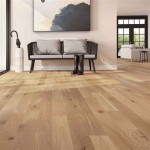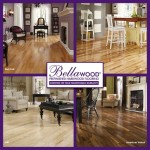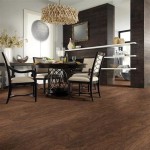Consumer Reports Flooring: A Comprehensive Guide to Choosing the Right Option
Selecting the right flooring is a critical decision for any homeowner, affecting not only the aesthetic appeal of a space but also its functionality, durability, and overall value. Consumer Reports offers extensive testing and analysis of various flooring types, providing consumers with the information needed to make informed choices. This article will delve into the different flooring options evaluated by Consumer Reports, highlighting their strengths, weaknesses, and suitability for various rooms and lifestyles.
Flooring represents a significant investment, and the market offers a wide array of materials, each with its own set of characteristics. Considerations such as budget, lifestyle, and the specific room in question all play a role in the selection process. This guide provides an overview of the most common flooring types, drawing on Consumer Reports data to provide a balanced perspective.
Key Point 1: Understanding Different Flooring Types
The flooring market is diverse, encompassing hardwood, engineered wood, laminate, vinyl, tile, and carpet. Each material offers a unique combination of aesthetic appeal, durability, maintenance requirements, and cost. Consumer Reports testing focuses on evaluating these factors to provide a comparative analysis.
Hardwood Flooring: Known for its timeless appeal and durability, hardwood flooring is a popular choice for living rooms, dining rooms, and bedrooms. Consumer Reports evaluates hardwood flooring based on its resistance to scratching, denting, and staining. The type of wood, such as oak, maple, or cherry, significantly impacts its hardness and durability. Solid hardwood can be refinished multiple times, extending its lifespan, while engineered hardwood, consisting of a veneer of hardwood over a plywood core, offers greater stability in humid environments.
Hardwood's primary weakness is its susceptibility to moisture damage. It is generally not recommended for bathrooms or basements where humidity levels are high. Regular maintenance, including sweeping, vacuuming, and occasional refinishing, is required to keep hardwood flooring in optimal condition. Consumer Reports' ratings often highlight the importance of professional installation to ensure a long-lasting and attractive finish.
Engineered Wood Flooring: As mentioned, engineered wood offers a cost-effective alternative to solid hardwood, providing a similar aesthetic while being more resistant to moisture fluctuations. Consumer Reports assesses the quality of the veneer layer and the stability of the core material to determine the overall durability and performance of engineered wood flooring. Thicker veneer layers allow for limited refinishing, while thinner layers may only be able to withstand light buffing. Engineered wood flooring is available in a variety of widths, plank lengths, and finishes, offering design flexibility. The installation process is often simpler than solid hardwood, with click-lock systems allowing for easier DIY installation.
Laminate Flooring: Laminate flooring is a synthetic material designed to mimic the appearance of wood, stone, or tile. It consists of a photographic image laminated onto a fiberboard core, with a protective wear layer on top. Consumer Reports tests laminate flooring for its resistance to scratching, staining, and fading. Laminate is a durable and affordable option for high-traffic areas and homes with pets or children. It is also relatively easy to install, making it a popular choice for DIY projects. However, laminate flooring cannot be refinished, and scratches or damage can be difficult to repair. The quality of the wear layer is a key factor in determining the longevity of the flooring.
Vinyl Flooring: Vinyl flooring is available in sheets, tiles, and planks, offering a wide range of design options and performance characteristics. Consumer Reports evaluates vinyl flooring for its durability, water resistance, and ease of maintenance. Vinyl flooring is particularly well-suited for bathrooms, kitchens, and laundry rooms due to its moisture resistance. Sheet vinyl provides a seamless surface, minimizing the risk of water damage. Luxury vinyl plank (LVP) and luxury vinyl tile (LVT) offer realistic wood or stone looks and are highly durable and water-resistant. The thickness of the wear layer is a critical factor in determining the durability of vinyl flooring. Higher wear layers offer greater resistance to scratches and dents.
Tile Flooring: Tile flooring is a durable and versatile option for a variety of rooms, including bathrooms, kitchens, and entryways. Consumer Reports evaluates tile flooring for its strength, water resistance, and slip resistance. Ceramic tile is a cost-effective option that is easy to clean and maintain. Porcelain tile is denser and more durable than ceramic tile, making it suitable for high-traffic areas and outdoor use. Stone tile, such as granite, marble, and slate, offers a luxurious look but requires more specialized maintenance. The grout lines between tiles require regular cleaning and sealing to prevent staining and mold growth.
Carpet Flooring: Carpet is a soft and comfortable flooring option that is often used in bedrooms, living rooms, and family rooms. Consumer Reports evaluates carpet based on its durability, stain resistance, and ease of cleaning. The type of fiber, such as nylon, polyester, or wool, significantly impacts its performance. Nylon is a durable and stain-resistant fiber, while polyester is more affordable but less durable. Wool is a natural fiber that is soft, durable, and stain-resistant, but it is also more expensive. Carpet requires regular vacuuming and occasional professional cleaning to maintain its appearance and hygiene. Consumer Reports testing also considers the impact of carpet on indoor air quality, with some carpets emitting volatile organic compounds (VOCs).
Key Point 2: Evaluating Performance Factors and Consumer Reports Ratings
Consumer Reports employs a rigorous testing methodology to evaluate flooring products across various performance factors. These factors are carefully weighted to reflect the concerns and priorities of typical consumers.
Durability: Durability is a key consideration for any flooring type. Consumer Reports tests flooring for its resistance to scratching, denting, and abrasion. These tests simulate the wear and tear that flooring is subjected to in a typical household. The results provide consumers with an indication of how well the flooring will hold up over time.
Stain Resistance: Stain resistance is particularly important for flooring in kitchens, dining rooms, and homes with children or pets. Consumer Reports tests flooring for its resistance to common household stains, such as coffee, wine, and juice. The ease of cleaning and stain removal is also assessed.
Water Resistance: Water resistance is a critical factor for flooring in bathrooms, kitchens, and basements. Consumer Reports tests flooring for its ability to withstand water damage, including warping, swelling, and discoloration. Products with a high water resistance rating are better suited for areas prone to moisture.
Ease of Installation: The ease of installation is an important consideration for DIY projects. Consumer Reports evaluates the installation process for different flooring types, noting the complexity of the process and the tools required. Products with click-lock systems or peel-and-stick backing are generally easier to install than those requiring gluing or nailing.
Slip Resistance: Slip resistance is a safety concern, particularly in bathrooms and kitchens. Consumer Reports tests flooring for its slip resistance under both dry and wet conditions. Products with a high slip resistance rating are less likely to cause accidents.
Consumer Reports Ratings: Consumer Reports assigns ratings to flooring products based on their performance across these various factors. The ratings are designed to provide consumers with a clear and concise summary of the strengths and weaknesses of each product. Products with high ratings are generally considered to be the best choices for their respective categories.
Key Point 3: Matching Flooring to Room and Lifestyle
The best flooring choice depends on the specific room and the lifestyle of the homeowner. Consider the following factors when selecting flooring:
Room Function: The function of the room will dictate the required performance characteristics of the flooring. For example, bathrooms require water-resistant flooring, while living rooms may prioritize comfort and aesthetics. Kitchens require durable and stain-resistant flooring, while bedrooms may benefit from soft and comfortable carpet.
Traffic Level: High-traffic areas, such as entryways and hallways, require durable flooring that can withstand wear and tear. Laminate, vinyl, and tile are all good choices for high-traffic areas. Low-traffic areas, such as bedrooms, may be suitable for softer and less durable flooring options, such as carpet or hardwood.
Moisture Levels: Areas with high moisture levels, such as bathrooms, kitchens, and basements, require water-resistant flooring. Vinyl, tile, and some engineered wood products are good choices for these areas. Solid hardwood and laminate flooring are generally not recommended for areas with high moisture levels.
Lifestyle: The lifestyle of the homeowner will also influence the flooring choice. Homes with children or pets require durable and stain-resistant flooring. Homes with allergy sufferers may benefit from flooring that is easy to clean and does not trap allergens, such as hardwood, tile, or vinyl.
Aesthetic Preferences: The aesthetic preferences of the homeowner are an important consideration. Flooring should complement the overall design of the home and reflect the homeowner's personal style. Hardwood flooring offers a classic and timeless look, while vinyl and laminate flooring offer a wide range of design options to mimic the appearance of other materials, such as wood, stone, or tile.
By carefully considering these factors and consulting Consumer Reports' ratings, consumers can make informed decisions about flooring that will enhance the beauty, functionality, and value of their homes. Remember to factor in the cost of installation, maintenance requirements, and long-term durability when making your final choice.

Stainmaster Washed Oak 737998 Lowe S Flooring Review Consumer Reports

Style Selections Lowe S Tavern Oak 528976 Flooring Review Consumer Reports

Florida Tile Home Collection Wind River Beige Chdewnd016x24 Flooring Review Consumer Reports

Mullican St Andrews Solid White Oak Strip 10930 Caramel Flooring Review Consumer Reports

Malibu Wide Plank Point Paradise French Oak Hdmcss846sf Flooring Review Consumer Reports

Procore Plus Warm Honey Oak Lwd8099rcb Lowe S Flooring Review Consumer Reports

Smartcore Naturals Hot Springs Hickory Lx55204008 Lowe S Flooring Review Consumer Reports

Home Decorators Collection Nobelford Oak 56807 Flooring Review Consumer Reports

Mohawk Elite Double Shot Oak Vfe09 890 Flooring Review Consumer Reports

Pergo Defense Classic Weather Pine Dp01 822 Flooring Review Consumer Reports
Related Posts








